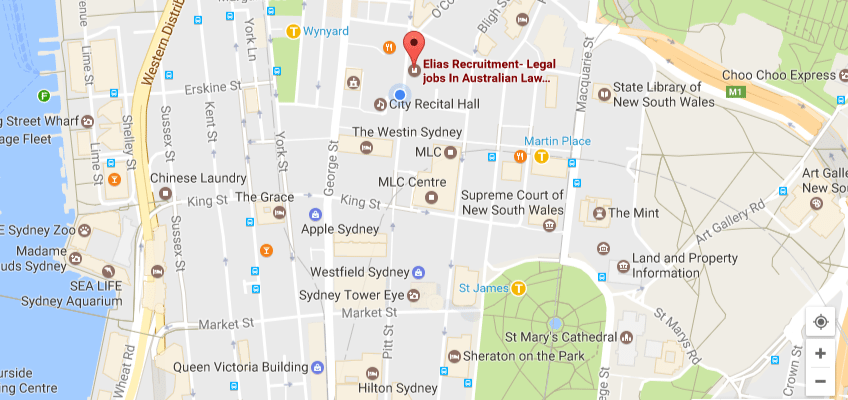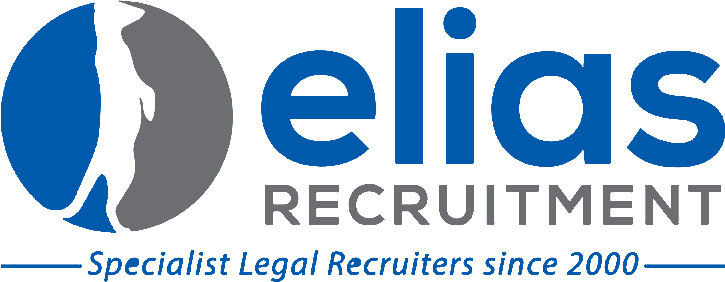Have the best jobs come to you!

How to position yourself for headhunting. A few touches to your mobile phone and your groceries, an Uber or a pizza come to you. So why not a job? Many of the best jobs are never advertised so how do you hear about them? Good employers know that the best lawyers are so busy running their practices that they don’t have time to trawl through job ads. They also like keeping strategic hires out of the public eye so the marketplace doesn’t catch on to what they’re doing and where they’re headed. That’s why, when it comes to bringing in the big guns, they’ll use third party headhunters to track down, sound out and snare the best talent for themselves. Headhunters don’t use a scattergun approach. Once they’ve been briefed they usually put feelers out via networks, compile a longlist, then research those candidates to see who’s likely to be a good fit. By the time they approach someone, they pretty much know who they are, what they do and what their reputation is like. So, if you want to be in their sights, there are six things you should be doing. 1. Social networks – make LinkedIn work for you Review your LinkedIn profile, make sure it clearly articulates your skills, experience and area of practice. Highlight projects you’ve worked on and the value you contributed (without of course breaching client confidentiality). Headhunters want to have a good understanding that you’ve worked on similar kinds of matters to those their client has briefed them about. Don’t be shy about blowing your own horn. 2. Be known as an industry expert You’ll never be headhunted if no one has ever heard of you. So, if you’re not already building a profile for yourself, start now. Put yourself forward to present on your areas of expertise wherever possible, especially for industry events or CPD. As an example, check out Bulletpoints for content. Write about important issues and hot topics affecting your work and share these – not just via your firm’s newsletters but directly with your contacts on LinkedIn and other social media channels. To ramp things up, join LinkedIn groups of like-minded people such as Australian Legal Community and start contributing to the conversations. Consider publishing in industry journals – or better still, form relationships with journalists to expand opportunities of being quoted in business or mainstream press as an expert in your field. 3. Releasing subtle signals If you are considering making a move, it’s a good idea to start putting your feelers out there. You can even change your LinkedIn settings to discreetly show that you are open to new opportunities (not viewable to your employer). Also check that your Inmail settings allow you to notify users that you are open to ‘career opportunities’. 4. Make contacting you easy, not a mystery While gatekeeping receptionists can be great at shielding you from overseas telemarketing calls, they can act as a block for headhunters who want to sound you out. So make yourself easy to contact by including your mobile number and personal email address on your LinkedIn profile. If a headhunter struggles to reach you, they may bypass you and run the opportunity by the next person on their list. And, if a headhunter calls and you can’t speak freely, set a time to chat when you’re out of the office. This also gives you a chance to check out their LinkedIn profile to see whether you want to deal with them. 5. Remain professional, don’t breach etiquette Don’t tell anyone in your firm – and that means anyone – about your plans to move, even once you’ve been approached. If the headhunting process isn’t handled discreetly, you’re likely to jeopardise your current position as well as any new opportunities. If a headhunter alerts you to an opportunity never approach the employer directly. Not only will your overtures be met with blank stares, you’ll be seen as disloyal. They’re using a headhunter for a reason. 6. But don’t be afraid If you are approached by a headhunter, you can benefit from their expertise. It never hurts to know the state of the market and have a trusted source of intelligence, especially around salary review time. Besides, even if the specific opportunity they wanted to talk about isn’t right for you at the time, something may hit their desk in the near future. Finally, if you’ve noticed that they’ve looked at your LinkedIn profile, drop them a line to find out why. Headhunting can be a slow dance of missed calls, profile views and unnoticed messages sitting in your personal email account. So, if you’re open to a move, make sure you stay alert and responsive to any headhunter approach. If you are interested in finding out more or hearing about new legal opportunities, contact Jason Elias on (02) 9555 5711 or [email protected].
Hey Partners, “what have you done for me lately?”

You’ve put in the hours, made compromises and sacrificed big for your firm. At some point, you’ve started to wonder whether it’s really worth sticking it out. Only you know when it’s time to move on. But if the headline caught your attention, chances are you’ve at least thought about what the next move might be. So, if you’re on the fence about whether you need to make a clean break, or explore new opportunities to further progress your career, here are some of the warning signs that it may be time to make a move. 1. Staying doesn’t make financial sense It probably seems risky, but changing job can often mean an increase in income or other non-financial benefits. New employers may offer an incentive to move across, some firms are now offering “70 cents in the dollar” and cross-referral fees. Consider the other benefits you may currently be missing out on, fewer hours, working closer to home or working from home one day a week. You may find you even have time to take that holiday that never seems to come around. 2. You’re risking guilt by association No matter how many hours you put in, if you’re not working for the right people, that’s energy wasted. Some firms are known for excellence in one area and not others. Ask yourself: how positive is our firm’s reputation in my practice area? Who are we being compared to? Are we being held back or even missing out on work because of the way the firm is perceived? Perhaps moving on is a better bet for your reputation. 3. Politics is a tricky game Managing demanding clients is one thing. Managing internal conflict is another level of stress altogether. Sometimes firm management just won’t be on your side. Perhaps they’re excluding you from managing bigger clients because of some perceived conflict. Did you back the wrong person at the last partner’s meeting? Politicking is part and parcel of law firm but if it is taking up too much headspace, it may be time to outgrow the petty game playing. 4. Your firm is choked by bureaucracy Too much paperwork and too many meetings might eat into your practice. You would be better off developing business and nurturing client relationships rather than attending endless irrelevant meeting that go nowhere. Overcomplicated workplaces can be very difficult to change. So ask yourself, do you have time to wait around while these knots are being untangled? Or do you have better things to be doing? 5. There’s been a change in direction When you started your current role it may have been a perfect match. But things change. If your firm decides to take things in a new direction, your areas of focus may simply not fit anymore. Perhaps they have brought in an outsider above you or merged with a firm with an incompatible culture. 6. There’s a values mismatch This is tough because values underpin every decision, big and small. Even if your situation looks fantastic on paper, a fundamental mismatch in values or personalities will wear you down over time. Values don’t have to be spelled out in a strategic document. You’ll know what your firm’s priorities are, and whether you can keep working towards them. 7. You know something better could be out there Even if you’re sure you can stick it out for another year or so, you might be missing out on golden opportunities by keeping your head in the sand. We all know the best roles are often those that go unadvertised – part of the “hidden” jobs market. Now might be time to get a proper assessment of what your opportunities are and let those enviable jobs to come to you (ie. get headhunted) by getting to know connected recruiters in the market. And if I can leave you with one key piece of advice, start thinking about your next move while you still have a good bargaining position and can move on your own terms and timelines. Looking for your next career opportunity or just want a free and confidential chat? Take a look at the current roles we have on offer, visit our Job Seekers page or call us on (02) 9555 5711.
Google map your career in 3 steps

The importance of setting goals can be likened to consulting a map. If you’re setting out to go somewhere you haven’t been to before, you’re more likely than not to need a map to help you get there. Setting goals is similar when considering your career map. 1. Set career goals To ensure that your goals stand the best chance of being reached, they need to be SMART! SMART is a learning technique, outlining criteria’s to help guide you through setting your objectives, for example: Specific – what is your goal? How often/how much? Where will it take place? Measurable – how will you measure it? How will you keep yourself accountable? Achievable – are your goals attainable? Realistic – is your goal or timeframe realistic for the goal you have set? Timely – do you have a specific timeframe/date set?. 2. Managing your career Once you’ve set your goals, next you’ll need to outline your career plan. How are your goals going to work in or align with your values, preferences, interests and personal circumstances? Your career plan should include milestones (specific stages throughout your goal and development journey) and the role of mentors or coaches (is there anyone who can help your development/career/goals? How can you best utilise them?). Another focus area should be building your profile – utilise social media platforms such as LinkedIn – showcase your achievements, awards, projects and experience. Finally, plan for continuing education, whether it’s a formal course or free online learning webinars, by committing to additional learning you are allowing yourself every opportunity stay ahead of the pack. Once you map out your plan and direction, remember to seize every opportunity by being prepared to adapt to circumstances that arise. 3. Sourcing opportunities When it comes to sourcing opportunities there are four key areas to consider. Review job boards and websites regularly – sign up to job alerts and email notifications from job search websites so you when jobs matching your criteria are advertised, you are the first to know. Build and promote your personal brand – the fastest way to build your brand is to give value – share your experience, connections and help those around you – being able to walk your talk has a greater and lasting impact than another person who only talks. Use social media to your advantage – outline your experience on LinkedIn, join groups, add colleagues, get your name out there and attached to great conversations and projects. However, as with all social media, ensure that all of your interactions online are appropriate (i.e. would a potential employer be happy to see that?) and untag, unsubscribe, and delete anything that isn’t. Understand and take advantage of the ‘hidden job market’ – with as much as 80% of available jobs never being formally advertised, it is always a good idea to keep in contact with your connections and turn to them first when searching for new opportunities. So when it comes to your career, don’t wing it. Make sure you have a good map and of course you may need to change directions every now and again. Just make sure you are heading in the right direction. Looking for your next career opportunity? Take a look at the current roles we have on offer, visit our Job Seekers page.

